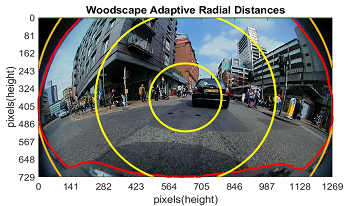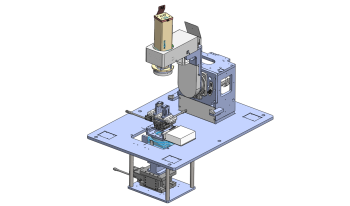
The Modulation Transfer Function (MTF) is an important image quality metric typically used in the automotive domain. However, despite the fact that optical quality has an impact on the performance of computer vision in vehicle automation, for many public datasets, this metric is unknown. Additionally, wide field-of-view (FOV) cameras have become increasingly popular, particularly for low-speed vehicle automation applications. To investigate image quality in datasets, this paper proposes an adaptation of the Natural Scenes Spatial Frequency Response (NS-SFR) algorithm to suit cameras with a wide field-of-view.

Vehicle-borne cameras vary greatly in imaging properties, e.g., angle of view, working distance and pixel count, to meet the diverse requirements of various applications. In addition, auto parts must tolerate dramatic variations in ambient temperature. These pose considerable challenges to the automotive industry when it comes to the evaluation of automotive cameras in terms of imaging performance. In this paper, an integrated and fully automated system, developed specifically to address these issues, is described. The key components include a collimator unit incorporating a LED light source and a transmissive test target, a mechanical structure that holds and moves the collimator and the camera under test, and a software suite that communicates with the controllers and computes the images captured by the camera. With the multifunctional system, imaging performance of cameras can be conveniently measured at a high degree of accuracy, precision and compatibility. The results are consistent with those obtained from tests conducted with conventional methods. Preliminary results demonstrate the potential of the system in terms of functionality and flexibility with continuing development.

The introduction of the new edge-based spatial frequency response (e-SFR) feature, known as the slanted star, in ISO 12233:2023 marks a significant change to the standard. This feature offers four additional edge orientations compared to the previously used slanted square, enabling measurement of sagittal and tangential spatial frequency response (SFR) in addition to SFR derived from vertical and horizontal edges. However, the expanded utility provided by these additional edges presents challenges in reliably automating the placement of appropriate regions of interest (ROIs) for e-SFR analysis, thereby complicating the accurate comparison of resolution across various orientations. This paper addresses these challenges by providing recommendations for the efficient and precise detection and analysis of the ISO 12233 slanted star feature. Our recommendations are based on thorough simulations and experimentally validated results obtained under diverse and challenging conditions.